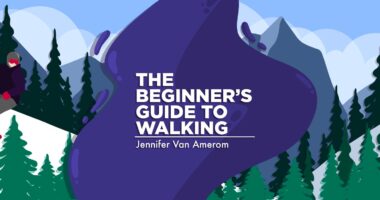Returning to acupuncture for pain management after 14 years
I'm hopeful the holistic practice can help me once again

Note: This column describes the author’s own experiences with acupuncture for pain management. Not everyone will have the same response to the practice. Consult your doctor before starting or stopping a therapy.
It’d been 14 years since I lay on a table, acupuncture needles gently placed along meridians meant to restore balance and reduce pain. But here I am, back on the table, not out of curiosity or exploration but desperation.
Living with neuromyelitis optica spectrum disorder (NMOSD) means constantly recalibrating. Treatment plans evolve, medications shift, and symptoms fluctuate. Initially, the pain that started in my neck, built behind my eyes, and peaked at my head was manageable. But lately the chronic pain has returned with a vengeance. It’s not just discomfort; it’s the kind of pain that shadows every step, interrupts sleep, and chips away at my capacity to function.
That’s what led me back to acupuncture, a therapy I’d tucked away as part of a different chapter of my life right before I was diagnosed with NMOSD. I had success with it before, eliminating the burning sensation that was foreign to me at the time. But then life got in the way, and other priorities took over.
But when the body cries out and nothing seems to work, we reach for what we know once helped. My return to acupuncture isn’t about belief or miracles. It’s about reclaiming tools that have supported me before. It’s about the small hope that maybe, just maybe, these tiny needles can help turn down the volume on my pain and allow me to regain some control over a body that’s clearly working against me.
This return feels bittersweet. I wish I didn’t need it. I wish the pain hadn’t come back. But I also feel a quiet sense of gratitude for the practitioners who welcome me back without judgment, and for my own resilience in continuing to look for ways to heal, even when the path feels endless.
How acupuncture helped me before
Before I was officially diagnosed with NMOSD, I experienced a peculiar burning sensation. My general practitioner referred me to a neurologist, but the appointment was months away. Despite a deep-seated fear of needles, the pain was so severe that I started looking at alternative options, including acupuncture. After consulting with one acupuncturist and sharing my story, he was willing to help but thought I would benefit more from working with Susan.
I learned that Susan possessed a unique background, having received neurological training in Beijing before transitioning to holistic practices here in Canada. Following our initial meeting, Susan requested a follow-up appointment the next day. In the interim, she consulted with her colleagues in Beijing, and their collective assessment led them to suspect NMOSD. Based on this potential diagnosis, Susan administered a treatment specifically targeting the burning sensation. Remarkably, after just a single session, it was like a power switch had instantaneously turned off the pain.
Did it hurt this much before?
Nearly a decade and a half have passed, and I find myself asking Susan for help with pain that’s recently resurfaced. While I’ll eventually reach out to my neurologist, the thought of more hospital visits, IV treatments, and the familiar NMOSD struggles is triggering significant anxiety, so first I want to try holistic healthcare again.
Susan’s kindness and empathy make it feel like no time has elapsed. As we catch up, she begins inserting tiny needles into my back, and I’m immediately struck by intense pain. I wonder if acupuncture was this painful before or if I’ve simply forgotten.
As Susan starts to briefly insert needles into visibly inflamed areas on my back and neck, she explains that the pain I’m experiencing indicates the extent of internal inflammation I’m dealing with right now. As each initial needle releases the pain, each needle inserted afterward in the same area now feels painless, almost magical.
As the session progresses, the pain subsides, replaced by a deep sense of relaxation. It’s as though my body is finally acknowledging the support, finally allowing itself to let go. I can feel the energy shifting, the pain in my back and neck dulling.
The hours following the treatment offer subtle changes. I sleep better. The ache that had been a constant companion seems to recede slightly. It’s not a complete miracle cure, but it’s a step — a small victory.
Returning to acupuncture has reminded me that healing is rarely linear. It’s about honoring what has worked before and being open to new iterations of the process. This time, the journey might look different. The pain might present differently. My needs might have shifted. But the essence remains: seeking balance, finding relief, and listening to my body’s call for help.
Note: Neuromyelitis News is strictly a news and information website about the disease. It does not provide medical advice, diagnosis, or treatment. This content is not intended to be a substitute for professional medical advice, diagnosis, or treatment. Always seek the advice of your physician or other qualified health providers with any questions you may have regarding a medical condition. Never disregard professional medical advice or delay in seeking it because of something you have read on this website. The opinions expressed in this column are not those of Neuromyelitis News or its parent company, Bionews, and are intended to spark discussion about issues pertaining to neuromyelitis optica spectrum disorder.







Leave a comment
Fill in the required fields to post. Your email address will not be published.